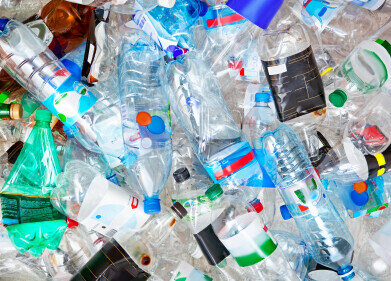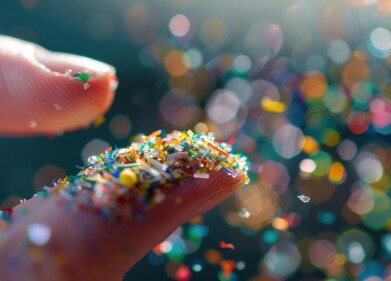Microplastics Analysis
6 Places Microplastics Can End Up
Feb 16 2021
Smaller than 5mm in diameter, microplastics are tiny particles of plastic that are produced in a variety of different ways. They can shed off clothes in a washing machine in the shape of synthetic fibres; they can come away from tyre treads on roadways; they can leach off larger plastic items when exposed to the elements. And just as microplastics derive from many different sources, they can end up in a wide variety of locations, as well.
So wide, in fact, that a recent study found microplastics in almost every conceivable location on the planet. A history of plastic overproduction and improper waste disposal methods mean that microplastics are nigh-on ubiquitous in our environment. Here are six of the more surprising locations you can find them on planet Earth.
In the air we breathe
As microplastics degrade over time, they become ever smaller and lighter, meaning that eventually they can just float away on a breeze. Although the effects of exposure to airborne plastics are not yet fully understood, it’s a concerning thought that they could be infiltrating your lungs with every breath you take.
In the Scottish Highlands
The north of Scotland is often revered for its natural beauty and the pristine images associated with it. Unfortunately, the Highlands are victim to microplastic contamination, as well, with research confirming the presence of particles in remote beauty spots like Loch Lomond and the Falls of Dochart.
At the top of Mt Everest
That’s right, even the highest point on the planet is not safe from our pollution. Last year, microplastics were discovered at the top of Mt Everest, reaching a maximum altitude of 8,440 metres above sea level. They are thought to have arrived there from the clothing of the intrepid explorers who scale the summit each year.
At the bottom of the ocean
From the tallest mountain in the world, to the deepest trench in the world. The Mariana Trench, located at 10,927m, was revealed to contain traces of plastic pollution in 2019. Trillions of microplastics enter the ocean each year, so it’s perhaps unsurprising that some of them sank all the way to the bottom. It is heart-breaking, however.
In all marine mammals
With so many microplastics in our seas and oceans, they are constantly being mistaken for food by marine dwelling creatures and ingested. This applies not only to fish and crustaceans, but marine mammals, as well. A recent paper from the University of Exeter and Plymouth Marine Laboratory found traces of microplastics in every mammal they studied.
In the food we eat
As bigger animals eat the smaller ones, the microplastics slowly work their way up our food chain… until they land on our dinner table. Again, the long-term ramifications of consuming microplastics are not yet known, though the scientific community is of the belief that there is no cause for immediate concern, since we likely excrete most of these substances out in our faeces.
Digital Edition
AET 28.4 Oct/Nov 2024
November 2024
Gas Detection - Go from lagging to leading: why investment in gas detection makes sense Air Monitoring - Swirl and vortex meters will aid green hydrogen production - Beyond the Stack: Emi...
View all digital editions
Events
Nov 26 2024 Paris, France
Nov 27 2024 Istanbul, Turkey
H2O Accadueo International Water Exhibition
Nov 27 2024 Bari, Italy
Biogas Convention & Trade Fair 2024
Nov 27 2024 Hanover, Germany
Dec 02 2024 London, UK












.jpg)






